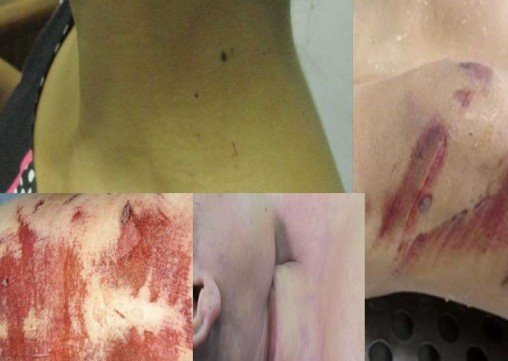Medical Definition: Injury/Wound (Mechanical Injuries)
Clinically, Mechanical injuries are the breach or disruption of the natural continuity of any body tissue (skin or mucous membrane). It can also be defined as damage or disruption, or breaking of any part of the body due to the utilisation of mechanical force.
Legal definition: Mechanical injuries are any harm or injury inflicted illegally to a person that is to his body, mind, property or reputation.
Classification of Mechanical Injuries
Injury is classified based on the following parameters such as
- Severity: Simple and Grievous
- Nature of injury (Medicolegal type): Suicidal, Homicidal, Accidental, Defence wounds, Fabricated or self-inflicted wounds
- Time of Infliction: Ante mortem (recent or old) and Postmortem
- Causative factors:
- Kinetic injury: Mechanical injuries or physical injuries
- Blunt force injuries: Abrasion, Bruise or Contusion, Laceration, Firearm, Fracture/dislocation of bone, tooth or joint
- Sharp force injuries: Incised wound, stab wound, and Chop wound
- Non-kinetic or non-motion injuries: Thermal, Chemical, and Miscellaneous injuries (Electrical, Radiation, Blast injury)
- Kinetic injury: Mechanical injuries or physical injuries
Grievous hurt
According to Muluki Aparadh (Sanhita) Ain, 2074 Chapter 14 ‘Kutpit wa angabhanga sambhandhi kasoor / ‘कुटपिट वा अंगभंग सम्बंधी कसूर’ Article number 192, it is said to be grievous hurt when:
- Permanent penury of the vision
- Permanent penury of the smelling power of the nose
- Permanent privation/penury of the hearing capacity of the ears
- Permanent privation/penury of the talking power of the tongue
- Cutting of female breasts to loss of function
- Male emasculation and female infertility owing to various injuries
- Fracture and dislocation of type of joints such as the spine, hands and legs, leading to disability
- Not being able to be involved in the profession owing to physical assault (asakchyam)
Simple hurt
According to Muluki Aparadh (Sanhita) Ain, 2074 Chapter 14 ‘Kutpit wa angabhanga sambhandhi kasoor / ‘कुटपिट वा अंगभंग सम्बंधी कसूर’ Article number 191:
- Any form of physical assault (other than grievous hurt)
- If it is considered physical assault:
- If any bodily pain is caused
- If the disease is transferred
- If any form of physical disability (asakta) is caused
Blunt Force
There are the following factors affect blunt force injuries:
- Amount of force delivered to the body
- Body region involved
- Amount of surface over which the force is delivered
- Time over the force is delivered
- Nature of the weapon
Abrasion
Abrasion is the destruction or disruption of the skin, which generally involves the superficial layer of your epidermis and papillary dermis of the body, by friction against the rough surface.
Contusion/Bruise
A contusion is an effusion or extravasation of blood into the tissue owing to the rupture of blood vessels, usually capillaries, in the body.
Laceration
It is a split or tear of your skin, mucous membrane, muscles or internal organs of the body due to the application of blunt force to a wide surface area of the body, which crushes or stretches tissue apart from the limit of its elasticity.
Chop wound
A chop wound is a sharp force injury produced by sharp, heavy armaments/weapons, resulting in a sharp penetrating injury, which is caused by the sharp edge combined with crushing injuries caused by the heavy armament.
Incised wound
The incised wound or injury is a clean-cut wound through tissues, generally the skin and subcutaneous tissues, including vessels.
Stab wound
A stab wound is produced from penetration with long, narrow instruments with pointed ends into the depths of the body, which are deeper than its length and width.
Medicolegal Importance of Mechanical Injuries
- Site of impact and direction, and degree of force
- Nature of injury (simple/grievous)
- Causative weapon connection
- Age of injury
- Character and manner of injury are known from its distribution
- Pattern of injury
- Defence cut
Documentation of injury (Mechanical injuries)
- Type
- Size
- Site
- Location
- Age, Area, numbers
- Orientation
- Direction
- If possible, photographic documentation
Proper documentation will give an idea about the distribution of injuries in your body, which can help determine:
- The most probable mechanism of injury (Fall or Assault)
- Correlate with history
- The relative position of the victim and the assailant
- Handedness of the assailant (right-handed or left-handed)

